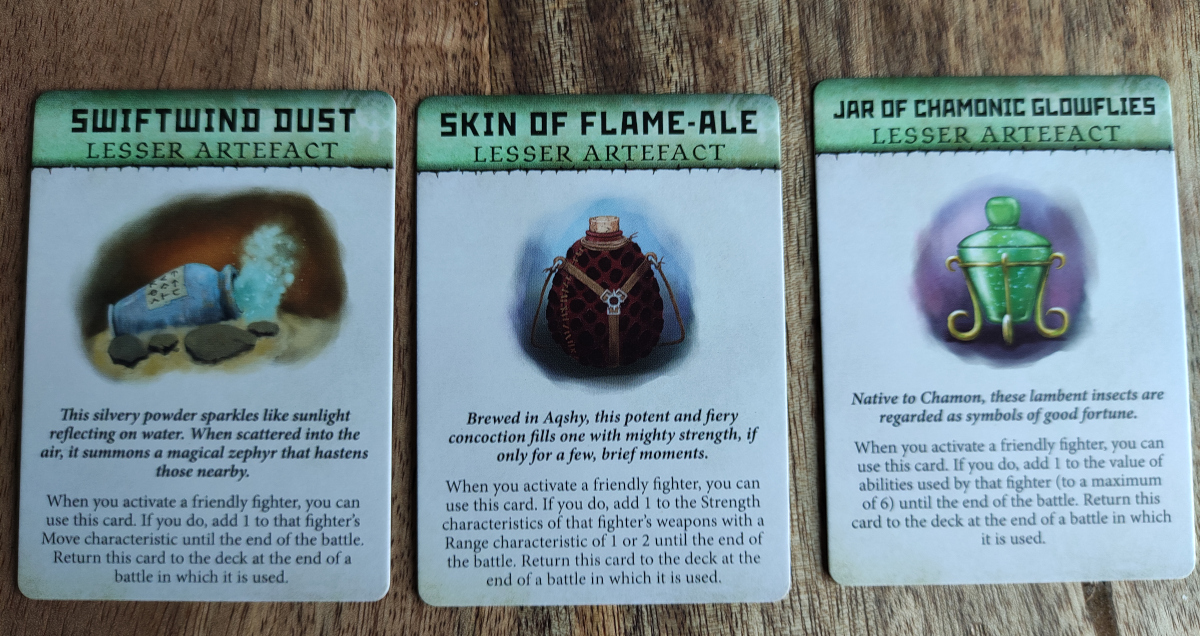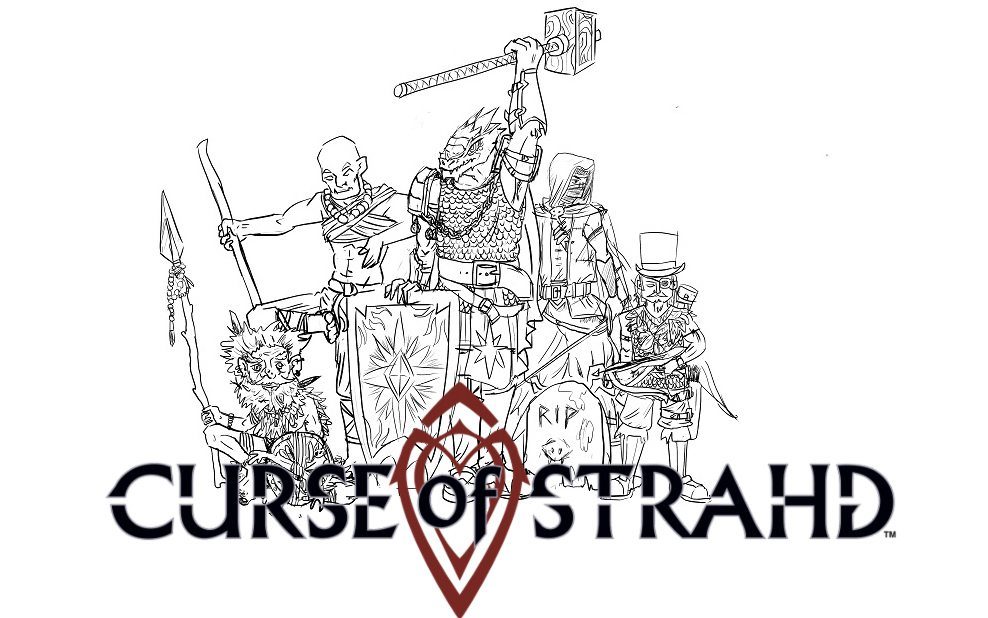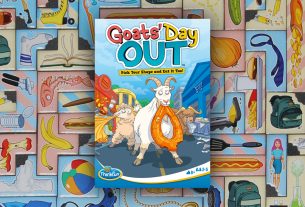Earlier this year I reviewed Fire Team, a small box game by Games Workshop available through more traditional retail outlets. This month I’m back to look at Bladeborn, which is being released in the same format. The two games share much of the same DNA, with similar rules mechanics. Bladeborn takes the world of Warcry and smashes it into the hexes of Warhammer Underworlds to deliver something that is made from both, but uniquely itself. Just like Fire Team, it’s a cracking game and I have no hesitation in awarding it GeekDad Approved status.
What is Bladeborn?
Bladeborn is a small boxed stand-alone game for two players. It contains everything you need in the box to pitch two chaos warbands against one another as they bid to gain favor with their infernal patrons. The game is for 2 players and lasts for 30 to 45 mins.
Inside the box you’ll find:
- 6 Godsworn Hunt Miniatures.
- 4 Khagra’s Ravagers Miniatures.
- Rules.
- Double-sided game board.
- 3 lots of 6 side dice (6 in each color)
- 6 Ability Cards.
- 31 Fighter Cards.
- 12 Battle Cards.
- 14 Twist Cards
- Convergence and artefact cards for playing campaign games.
- All the tokens needed to play the game
- Warcry rules booklet (for using the miniatures in GW’s Warcry skirmish game).
The miniatures are reprints from the Warhammer Underworlds range and are beautifully dynamic, particularly the Godsworn Hunt warband. Both bands are a joy to paint. Models come unassembled, so you will need a craft knife, or better still some sprue clippers, to remove them from their sprue. No glue is required as they are GW designated “easy to build.”
Not only do the cards in the box allow you to play with Khargra’s Ravavers and the Godsworn Hunt, you’ll also find included the rules for four other Warhammer Underworlds warbands. If you have the models for The Eyes of the Nine, Grashrak’s Despoilers, Garrek’s Reavers, or The Dread Pageant, you can play those too.
The Warcry rules booklet has the rules for all 6 warbands that you are given ability cards for.
How to Play Bladeborn.
The full rules for Bladeborn are available, here.
Each game of Bladeborn starts with choosing a Battle Map card at random, though for the first game the rules suggest using “Drawn and Quartered.”
Set the board up as shown on the card. Each battle map describes where to place the game’s objectives and where each team’s deployment hexes are. Also marked are two reserve hexes; one for each player. This is where reinforcements arrive later in the battle. The battle map also gives the game’s victory conditions and the number of rounds the game lasts (Usually 3).
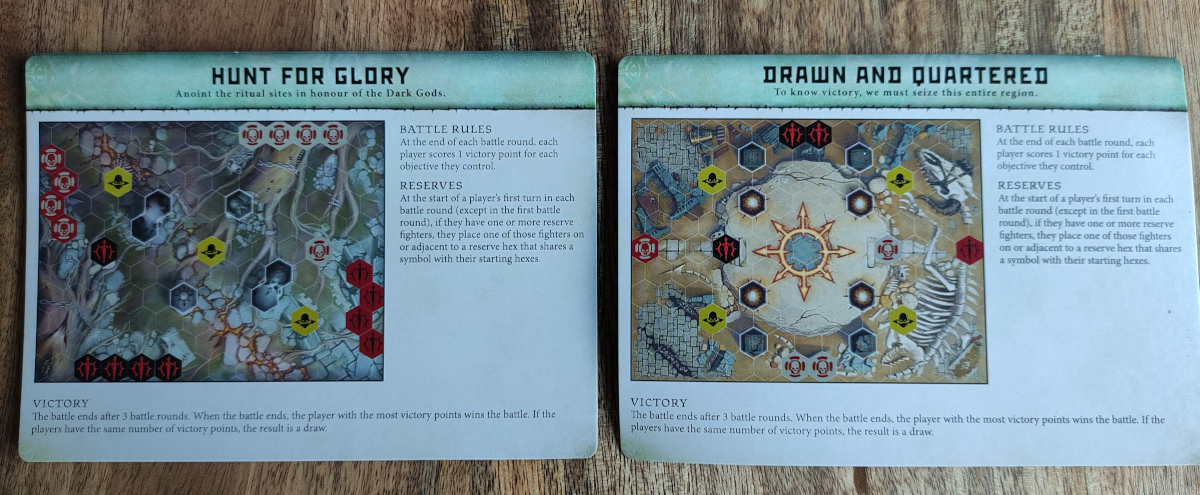
Players then pick which fighters they wish to be their reserve fighters. The number of fighters that are used reserves is given on the warband’s ability card. In the base game, it’s 2 for the Godsworn Hunt and 1 for Khagra’s Ravagers. This means the Godsworn player will be fielding 4 miniatures during setup and the Ravagers 3.
This may seem unfair, but the Godsworn Hunt is a fast, agile warband with the defensive capability of a paper bag. The Ravagers are slower, heavily armored, and pack a solid punch.
Players roll off to see who chooses their reserves first and who will also place the first model. Model placement is done alternately until all models are placed. Models are placed in or adjacent to any deployment hexes given on the Battle Card (Note: You can’t choose to deploy on reserve hex at this point).
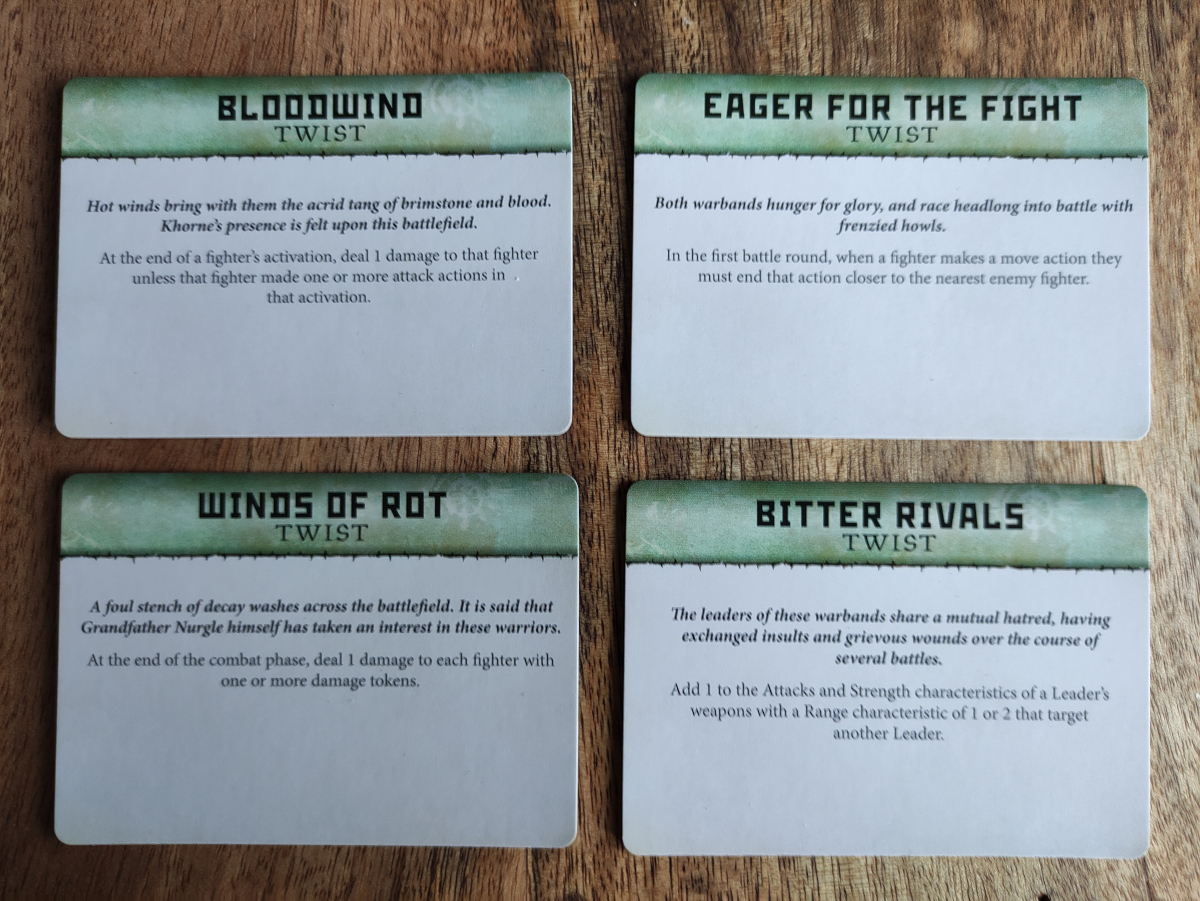
Once all the fighters are placed players randomly draw a “twist” card. This will reveal a small effect that alters an aspect of the game. It may be something that makes it harder to hit, like poor visibility, or perhaps this match is a grudge match, more brutal than your standard Bladeborn clash, so fighters inflict more damage in combat. The point of the twist cards is to add a little variation and to make no two games of Bladeborn the same.
The Battle Round.
A Battle Round is divided into 4 phases.
- Hero Phase.
- Reserve Phase.
- Combat Phase.
- End Phase.

The Hero Phase.
The hero phase has a neat mechanic first used in Warcry. Both players roll 6 dice (one set each from the different colored sets). These are the ability dice. You collect together any pairs (doubles) or triples of numbers rolled. These give you the abilities you can use in this round. Any singles (1 of a number) you roll are kept to one side; these will help determine initiative. You can split bigger dice collections (quads or 5, or 6 of a kind) into doubles and triples as long as you do so exactly and don’t leave a single dice.
Each warband in the game has an ability card that sets out special abilities that can be used by your warband. There are six abilities on a card and each ability will be either a “double” or a “triple.” You can use the abilities (usually in the combat phase) by spending the ability dice that you rolled as outlined above. Generally, triple abilities are better than double abilities.
NOTE: For some warband abilities it is important to know the number value of the ability roll. A triple 6 might be better than a triple 1, for example. This is entirely dependent on the ability used and is explained in the relevant ability text. (Further Note: The Godsworn Hunt don’t have any abilities where the value rolled is important).
Every ability on an ability card has at least one logo (runemark) next to it. Fighters can use the abilities that have the corresponding runemark on their fighter card. To be able to use an ability, fighters must match ALL of the runemarks on their fighter card with those for that ability.
The final part of the hero phase is determining who has initiative for this round. This is given by whoever had the most singles in their ability dice pool. In the event of a tie, in the first round, players roll off to see who goes first. In later rounds, the person who didn’t have initiative in the previous round wins initiative.
Reserve Phase.
There is no reserve phase in the first turn. In subsequent turns, players may bring on one fighter from their reserve pool and place them on or adjacent to their reserve hex.

Combat Phase.
This is where the action happens. The rules here are very similar to Fire Team but quite different to Games Workshops’s main games.
Each combat round is broken into 8 turns, 4 for each player. In each turn, you will activate one fighter. There are four turn counters per player and you flip these when you have activated a fighter.
Players take turns to activate fighters. The person with initiative picks which player activates first.
Activated fighters may make two actions and you may make the same action twice with the same fighter. Once a fighter has taken two actions you placed a token next to them to remind you that it has been activated.
If you have less than 4 fighters on the battlefield during a round (this is very common), once ALL your fighters have activated, you can then use any remaining activations from your turn to activate one of your fighters again. In this case, fighters may only make one action. You can even activate this fighter again if you still have some activations left. For example: If you find yourself down to one fighter, you may activate them 4 times in a row, taking two actions in the first turn, then a single action for each of the remaining 3 turns.
Bladeborn Actions.
The four actions you can take in Bladeborn are:
- Move. Each fighter has a movement stat on their fighter card. This is the number of hexes they can move.
- Attack. Use your fighter to attack another.
- Disengage. If you’re in a fight, sometimes you want to escape. You can’t just move away, you have to take a disengage action first.
- Wait. Sometimes (rarely) there is nothing that you want to do with your fighter. You still have to activate them though. In this case, you can effectively pass with a wait action.
When a fighter is activated they can also use any abilities as given by the ability dice roll from the hero phase.

Combat in Bladeborn.
Combat in Bladeborn is usually a swift and brutal affair.
Fighters have at least one weapon profile on their fighter card. Fighter cards contain the following information:
- Range: The number of hexes away the weapon can reach. If none of a fighter’s attacks are in range they can’t attack this turn.
- Attacks: The number of dice rolled when making this attack.
- Strength: How hard the attack hits. This value is compared to the enemy fighter’s toughness (also given on a fighter card). If the attacking strength is greater than the target’s toughness, 3+ is needed to wound. If the two stats are the same, 4+ is needed, and, if the attacking strength is lower than the defending toughness, then 5+ is needed. Any sixes rolled are critical hits.
- Damage: Usually given as two figures e.g. 3/6. The first number is the damage caused by a normal hit. The second number is the critical hit damage. Critical hits are normally very effective! This damage is taken from the defending fighter’s wounds score. If the fighter is reduced to 0 wounds then the model is removed from the board. Damage is tracked via the use of damage counters.
Some fighters also have special rules printed on their card, be sure to employ these when attacking.
The End Phase.
Not much happens in the end phase. This is where you keep track of any victory conditions as shown on the battle map. Any fighter that is within one hex of an objective is said to control that objective. If both players have fighters within a hex, then the player with the most fighters present has control of it.
It’s worth noting that an objective remains in a player’s control, even if their fighters move away from it, until such time as the opposing player uses one of their fighters to reclaim it. This has important tactical considerations, especially for the faster-moving, more numerous Godsworn Hunt.
Once the end phase is completed, the turn is over and it’s time for the next hero phase. The number of rounds a game takes place over is given on the battle map. This is usually 3 rounds.
Campaign Games.
One-off games are great fun, but Bladeborn also has some campaign rules that allow you to improve your warbands and create something of a narrative.
When you decide to play a campaign both players will stick with the same warbands for the duration of the campaign. You start by playing a random battle as outlined above. The winner of that battle becomes the “aspirant.” They gain a lesser artefact card, which gives their warband a small one-shot boost to be used in the next battle.
That next battle then becomes a “convergence.” Each warband has three associated convergence cards. These work in a similar fashion to the twist cards outlined above. They offer a one-off special condition that applies to the convergence game.
If the aspirant wins the convergence they keep the convergence card, turning it over. On the back of the card is a power-up that they get to keep for the remainder of the campaign. (Not one-shot boons like the artefact cards outlined above.) One interesting idea with this is that after a campaign has finished the losing player is allowed to keep any rewards they have gained through winning convergences IF they are playing the same player that beat them. This is a neat way of giving the losing player a boost going into the next campaign.
The next battle after somebody has won their convergence will be another random battle. The winner of that battle then becomes the aspirant. If the aspirant loses a convergence, the warband that beat them now becomes the aspirant and the next battle fought is a new convergence battle.
Games continue in this cycle until somebody has one three convergence battles at that point they have won the campaign.
Why Play Bladeborn?
There are lots of reasons to play Bladeborn. The miniatures are fab and the ruleset is very tight for a GW game and plays very quickly. I think the Warcry way of doing things suits a boardgame better than it does a tabletop skirmish game.
The use of hexes for movement makes the game very accessible for newcomers and speeds things up for old hands. Bladeborn is a brutal game. Models can close each other down very quickly and the Ravagers, in particular, can deal out a lot of damage. Yet there are some decent tactical decisions to be made. Whilst this is a combat game, killing fighters doesn’t actually score you any victory points (unless the scenarios specifies that it does). You have to keep your eyes on the objectives. Keeping control of them is the key to victory.
The models in the box are some of the best that GW have made for Warhammer Underworlds and it’s great to see them being repurposed. They’re possibly not the best choices for beginner painters. The Godsworn Hunt in particular are dynamic with lots of flesh color to paint which can be tricky when you’re first starting out.
All in all, Bladeborn is an excellent gateway game. It introduces you to what the Games Workshop hobby is about without breaking the bank or forcing you to sit for hours learning rules and then more hours to play the game. Games of Bladeborn can easily be finished in 30 mins. 45 mins tops. After you you’ve played a game, it’s easy to set up for another and because of the different missions and twists cards, your next game will never be the same as the previous one. This gives this quick little game plenty of opportunity for repeat plays.
If you want to extend the longevity of the game further then you pick up the models for the other warbands that have rules included in the box. Again, they’re some of GW’s finest. This expands your gameplay and repeated play options even further.
Bladeborn is an accessible small-box game that looks absolutely great on the tabletop. GW games are often too much about the aesthetic and not the gameplay. Bladeborn bucks that trend and is well worth a look.
![]() To subscribe to GeekDad’s tabletop gaming coverage, please copy this link and add it to your RSS reader.
To subscribe to GeekDad’s tabletop gaming coverage, please copy this link and add it to your RSS reader.
Click here to see all our tabletop game reviews.
Disclosure: GeekDad received a copy of this game for review purposes.

Liked it? Take a second to support GeekDad and GeekMom on Patreon!



